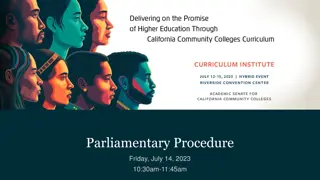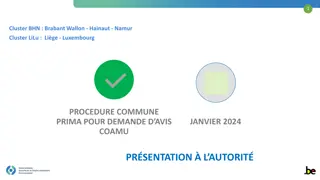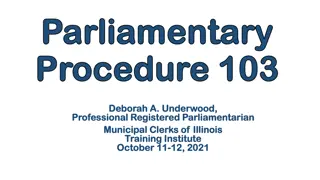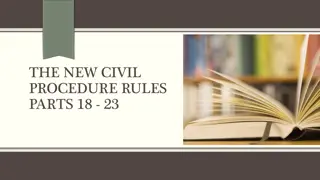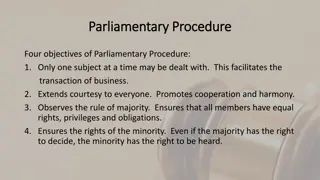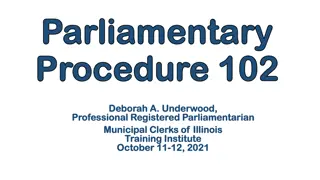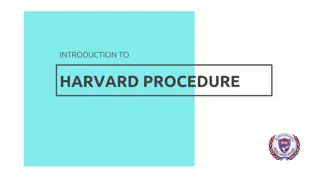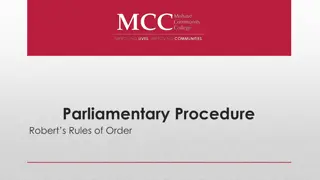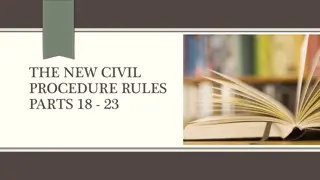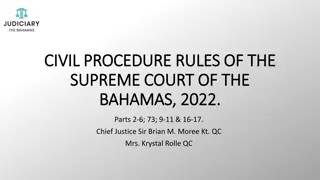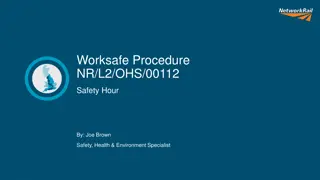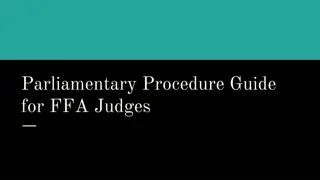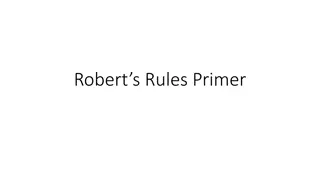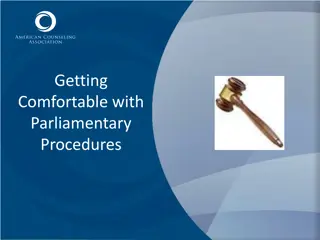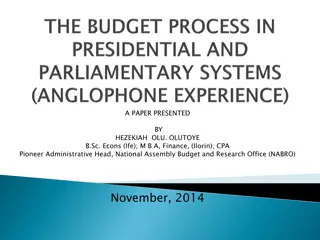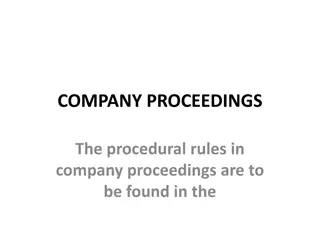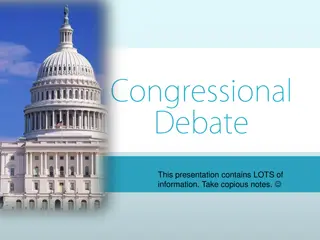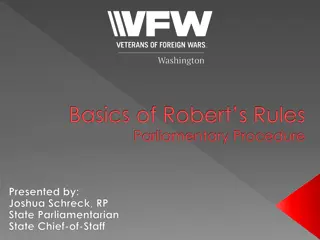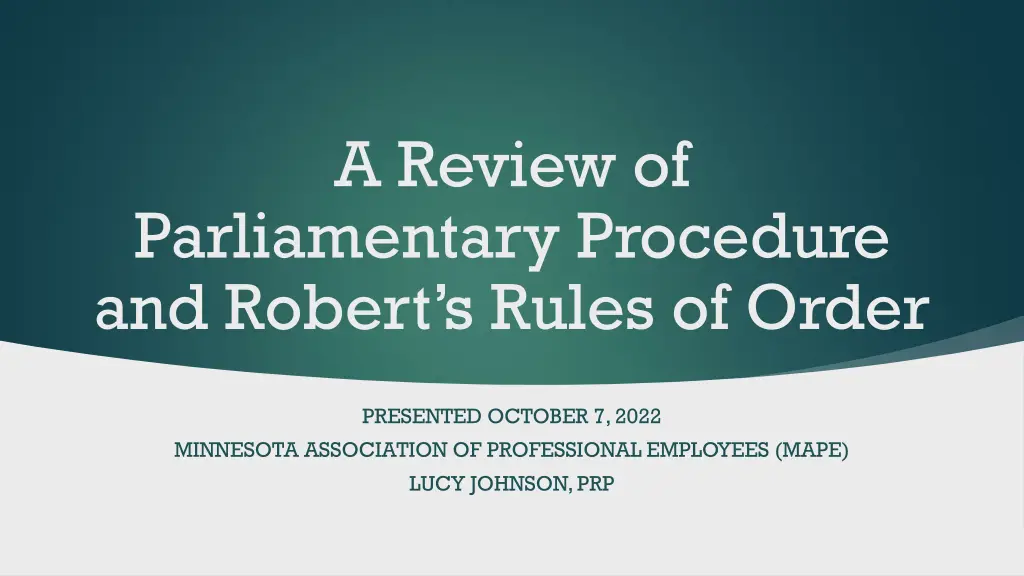
Parliamentary Procedure & Robert's Rules of Order Review
Explore an insightful review of Parliamentary Procedure and Robert’s Rules of Order, presented by the Minnesota Association of Professional Employees. Delve into the purpose of Robert’s Rules of Order, the importance of following rules, and the different types of motions involved in orderly meetings.
Download Presentation

Please find below an Image/Link to download the presentation.
The content on the website is provided AS IS for your information and personal use only. It may not be sold, licensed, or shared on other websites without obtaining consent from the author. If you encounter any issues during the download, it is possible that the publisher has removed the file from their server.
You are allowed to download the files provided on this website for personal or commercial use, subject to the condition that they are used lawfully. All files are the property of their respective owners.
The content on the website is provided AS IS for your information and personal use only. It may not be sold, licensed, or shared on other websites without obtaining consent from the author.
E N D
Presentation Transcript
A Review of Parliamentary Procedure and Robert s Rules of Order PRESENTED OCTOBER 7, 2022 MINNESOTA ASSOCIATION OF PROFESSIONAL EMPLOYEES (MAPE) LUCY JOHNSON, PRP
Objectives Why have Rules Whose Rules Purpose of Robert s Rules of Order, Newly Revised (RONR) Review the 13 Ranking Motions Rights of Members
Meetings to Avoid
Purpose of RONR Ensure that your voice is heard Fair and efficient meetings Members have rights Protect the rights of the minority and absentee Civil Discourse Majority Rules Orderly System: Precedence, Germane, Dilatory
Types of Motions Main Motions Ranking Motions (Precedence) Privileged Motions Subsidiary Motions Non-Ranking Motions Incidental Motions that Bring a Question Again before the Assembly
Lay on the table 8 Previous Question 7 Limit or Extend the Limits of Debate 6 Postpone to a Certain Time (or Definitely) 5 Commit or Refer 4 Amend 3 Postpone Indefinitely 2 Main Motion 1
Lay on the table 8 Previous Question 7 Limit or Extend the Limits of Debate 6 Postpone to a Certain Time (or Definitely) 5 Commit or Refer 4 Amend 3 Postpone Indefinitely 2 Main Motion 1
Main Motion Bring Business before an assembly Everyone knows what the motion is Focused discussion Pros and Cons Minority voice is heard Majority voice rules
Lay on the table 8 Previous Question 7 Limit or Extend the Limits of Debate 6 Postpone to a Certain Time (or Definitely) 5 Commit or Refer 4 Amend 3 2 Postpone Indefinitely Main Motion 1
Postpone Indefinitely When the Assembly doesn t want to vote on a motion Kills a motion Can be introduced after discussion has started Differs from Object to the Consideration of a Question Can be debated
Lay on the table 8 Previous Question 7 Limit or Extend the Limits of Debate 6 Postpone to a Certain Time (or Definitely) 5 Commit or Refer 4 Amend 3 Postpone Indefinitely 2 Main Motion 1
Amend Germane to the Main Motion Primary Amendments Secondary Amendments (amend the amendment) Voting Order: Secondary Amendment Primary Amendment Main Motion
Lay on the table 8 Previous Question 7 Limit or Extend the Limits of Debate 6 Postpone to a Certain Time (or Definitely) 5 Commit or Refer 4 Amend 3 Postpone Indefinitely 2 Main Motion 1
Lay on the table 8 Previous Question 7 Limit or Extend the Limits of Debate 6 Postpone to a Certain Time (or Definitely) 5 Commit or Refer 4 Amend 3 Postpone Indefinitely 2 Main Motion 1
Lay on the table 8 Previous Question 7 Limit or Extend the Limits of Debate 6 Postpone to a Certain Time (or Definitely) 5 Commit or Refer 4 Amend 3 Postpone Indefinitely 2 Main Motion 1
Limit or Extend the Limits of Debate Affects members rights requires a 2/3 vote MAPE s 2022 Delegate Assembly Standing Rules regarding Debate: 7. max of 3 speakers for and 3 against 8. Each speaker allowed 2 minutes 9. A delegate shall only speak once per motion
Lay on the table 8 Previous Question 7 Limit or Extend the Limits of Debate 6 Postpone to a Certain Time (or Definitely) 5 Commit or Refer 4 Amend 3 Postpone Indefinitely 2 Main Motion 1
Previous Question Closes debate, requires a 2/3 vote because it takes away members rights MAPE s 2022 Delegate Assembly Standing Rules 10. At least 2 speakers on each side speak before this motion is allowed 11. After 2 speak on one side & Chair asks 3 times for a speaker on the opposing side the debate will be ended.
Lay on the table 8 Previous Question 7 Limit or Extend the Limits of Debate 6 Postpone to a Certain Time (or Definitely) 5 Commit or Refer 4 Amend 3 Postpone Indefinitely 2 Main Motion 1
Fix the Time to Which to Adjourn 13 Adjourn 12 Recess 11 Raise a Question of Privilege 10 Call for the Orders of the Day 9
Members Rights and Incidental Motions Point of Order When a member thinks the RULES are being violated. For example, if a delegate speaks more than once or longer than 2 minutes Request for Information or Parliamentary Inquiry A member has the right to know what s going on. The request needs to relate to the business at hand. For example, Could Delegate C explain further or Would this motion be in order now? Appeal the decision of the Chair If 2 delegates don t agree with the ruling of the Chair usually regarding a Chair s decision on a question of parliamentary procedure
Members Rights and Incidental Motions cont.. Division of the question When a motion or resolution contains two or more parts capable of standing separately. Each part would then be considered. Division of the Assembly (or Division) If a member doubts the accuracy of a voice vote Reconsider Permits correction of a vote if added information, a changed situation, or the vote was hasty, ill-advised or erroneous. Timeliness and member making motion voted on the prevailing side (majority).

